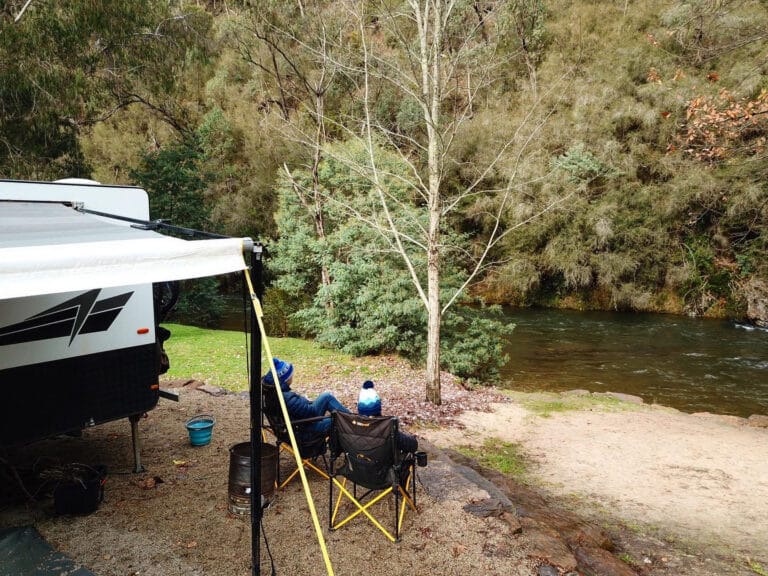While it’s not exactly a fun topic, we break down the diseases you’re at risk of catching from creepy crawlies while traversing the great Aussie landscape
1. Dengue Fever
There have been increasing instances of Dengue fever outbreaks in northern and some parts of southern and central Queensland, so pay attention to this one if you’re travelling in the sunny state. Dengue fever is transmitted by a particular type of mosquito known as Aedes aegypti found in tropical and subtropical locations.
Symptoms, which generally appear within 3-14 days of being bitten, can include fever, lethargy, severe headaches, muscle and joint pain, loss of appetite, vomiting, diarrhoea, stomach pain, itchy red rashes, and bleeding from nose and gums.
Symptoms can last up to a week and while most people recover, you should see your doctor for a diagnosis. There’s no specific treatment or vaccine but plenty of rest and water, along with paracetamol for the pain, can go a long way. Just steer clear from anti-inflammatories like aspirin and ibuprofen, which can increase the chance of bleeding.
2. Ross River Fever
Another disease spread by mosquitoes, the Ross River fever is more common (in fact, the most common mosquito-borne infection in Australia) but not as nasty as the Dengue fever. In fact, people who are infected may never even experience symptoms, which are often flu-like in nature and include fever, chills, headache, and muscle aches. The symptoms appear within 7-10 days of being bitten and usually disappear within a few weeks.
People who live in rural areas in NSW and warm, humid climates where water is present are most at risk of catching this virus, which is passed on by female mosquitoes who have fed on the blood of an infected animal. The virus cannot be spread from one person to another. There isn’t a specific treatment, but your doctor will be able to suggest medications to help ease your symptoms. Again, lots of water and rest always helps.
3. Kunjin Virus
This virus moves between birds and mosquitoes, but humans can only catch them by being bitten by an infected mosquito. While the virus is rare, very young children are especially at risk. People who have been infected before cannot be infected again, and those who live in areas where the virus occurs may be immune. The virus is most common in WA during wet season, particularly in the Kimberley and parts of the Pilbara near swamps, floodplains, rivers and dams.
Many infected people don’t experience symptoms, but those who do will probably have swollen and aching joints, rashes, muscle weakness, fatigue and enlarged lymph nodes (usually 8-10 days after being bitten). In mild cases, symptoms will improve after a few days. If you suspect you or any of your family of having this disease, visit a doctor promptly to make sure it isn’t the similar but much more severe (and sometimes life-threatening) Murray Valley encephalitis (MVE), which affects the brain.
4. Barmah Forest Virus
This less-than-pleasant virus, commonly found in bush and river areas across the country, is also brought to you by pesky mosquitoes. Most cases occur in coastal areas during March and April, but infected mozzies have also been found inland. The number of infected mosquitoes tends to rise in warm, wet weather, which encourages mosquito breeding. In fact, the WA Department of Health released a warning earlier this year for people travelling in the south-west region of the state.
If you’re unfortunate enough to be bitten by an infected mosquito, you might start to see symptoms within 7-10 days, although in many cases symptoms never arise at all. The signs include fever, chills, headaches and muscle pain, as well as joint swelling and stiffness. You will probably feel tired and weak, and you may develop a rash. The good news is that most people fully recover in a few days. In rare cases though, joint pain and tiredness may linger
for months.
5. Lyme Disease
Lyme disease is one you want to watch out for – while the symptoms usually aren’t severe, the disease can take a nasty turn if it spreads through your bloodstream. The disease is passed on by ticks, so make sure you protect yourself when out camping or walking – that means not meandering through tall grass and bush areas unless your skin is covered, and making sure that you use an insect repellent containing DEET (Diethytoluamide) or Picardin.
After being in tick-prone areas, you should check yourself and family members (including pets!) for any ticks, particularly behind the ears and on the head. You should also put your clothes in a hot dryer for at least 10 minutes to kill any ticks that may be present. Even if the tick is not carrying the bacteria that causes Lyme disease, the bite may still induce an allergic reaction or toxic poisoning.
If you have been infected, a pink rash may appear within 3-32 days after being bitten. You may also experience fever, headaches and lethargy. Seek treatment as soon as possible, because the infection can spread through the bloodstream and cause an infection in the brain or the heart. It can also cause inflammation of joints and result in long-term neurological issues.
KEEPING THE CREEPY CRAWLIES AWAY
Prevention of these diseases comes down to ensuring that you aren’t a prime target for blood-sucking pests. There are plenty of ways to protect your camp (and yourself) from mozzies and other insects. The first step is to choose the right site. Be wary of camping nearing still water, as this is often a mozzie haven. If you’re
near a river, pitch your tent on higher ground with sparse vegetation.
While you can (and should) get a mosquito net for your tent, when you’re outside you’ll need to cover up, especially at dawn and dusk. Cover your legs and arms with loose clothing, wear closed shoes and a wide-brimmed hat. It’s best to opt for light-coloured clothes, as mozzies are less attracted to light colours and it also makes it easier to spot any ticks.
Don’t forget to bring plenty of insect repellent – spray on ones are great for protecting uncovered areas of your body, while mosquito coils and insecticide pads are ideal for warding off bugs from your camping area. Mosquitoes are attracted to lights, so use a bright white or ultraviolet light to draw them away from your tent by keeping one high above your camp site. Also, keep lights off in your sleeping area, or use a headlamp with a red LED, as mosquitoes are less attracted to red lights.
In case you do get bitten, make sure you have some anti-bacterial cream and bite relief products on hand that ease the sting and itch, as well as diluted tea tree oil and aloe vera gel, which help to relieve swelling and pain. If you or your family start to experience symptoms of the diseases listed above, get yourself to the nearest medical facility.












